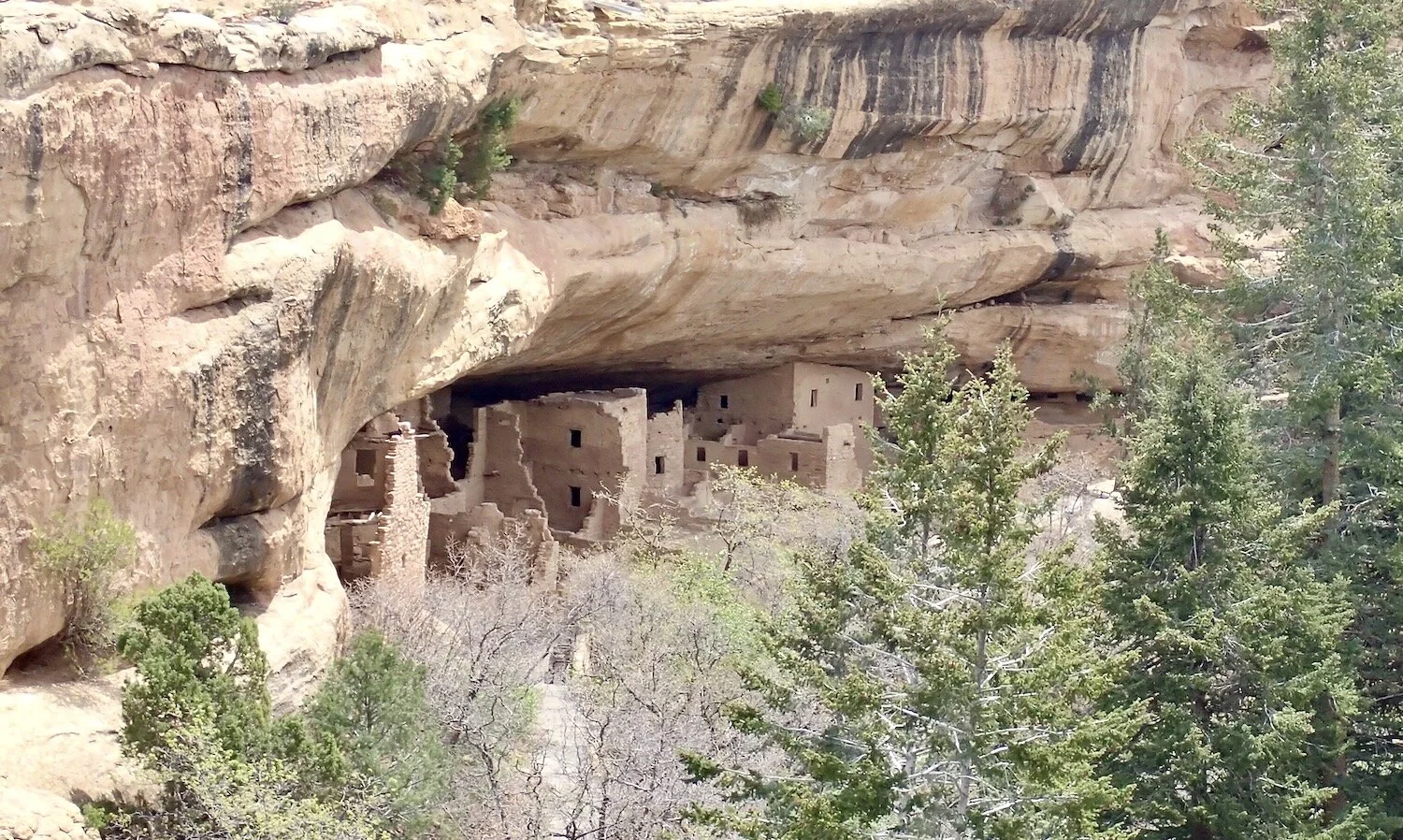Traveling America By Van: Pueblos And Cliff Dwellings
By: John Kumiski
A terrifying road, or exhilarating, depending on your point of view, leads up, up, up, to the top of Mesa Verde. Now a national park, 1200 years ago there were thriving communities living up here. Although modern Pueblo Indians dislike the term, anthropologists call these people Anasazi. They had settlements all through the southwest, in the general vicinity of what's now called the Four Corners region.
Susan on what I called "The Ladder of Death," climbing to the Alcove at Bandelier National Monument.
We had already visited some cliff dwellings at Bandelier National Monument. There, the Pueblo Cliff trail winds for a little more than a mile, up and down ladders, so visitors can see alcoves carved into cliff walls where somewhere between 700 and 800 people lived, over 1000 years ago. Petroglyphs decorate the cliff walls. Thousand-year-old masonry supports the remains of structures built from blocks of sandstone. We went to visit what the Park calls the Alcove, where Susan defied the Ladder of Death (my term) to garner a gaze from this large, high, living space. I was less bold.
I found the entire experience humbling, yet thought-provoking. How many modern people could survive in this area now? No running water, no TV, no cell phones, no electricity. We've lost a few survival skills through the years, it seems...
In addition to living in cliffs, Anasazi peoples also built communities from sandstone blocks, using some form of mud mortar to cement the blocks together. You can see ruins of these structures at many sites in the west, including at Mesa Verde.
At Mesa Verde, Susan and I took a hike on the Petroglyph Point Trail. This rugged two-and-a-half-mile trail, at over 7,000 feet elevation, took a lot out of me physically. But the views! And when we reached the petroglyph panel, a man who happened to be there also happened to know something about the petroglyphs we were looking at.
The petroglyph panel at Mesa Verde National Park. What it means is not fully understood.
This gentleman explained that the panel was a running history of the raven and antelope clans, as evidenced by the raven and antelope images carved into the rock. There were hundreds of images here. What they mean is next to impossible to comprehend for Westerners.
At www.legendsofamerica.com, Kathy Weiser states, "There were many reasons for creating the Petroglyphs, most of which are not well understood by modern society. Petroglyphs are more than just 'rock art,' picture writing, or an imitation of the natural world. They should not be confused with hieroglyphics, which are symbols used to represent words, nor thought of as ancient Indian graffiti. Petroglyphs are powerful cultural symbols that reflect the complex societies and religions of the surrounding tribes." We can look, and marvel, and photograph, but probably never fully understand.
We also visited Canyons of the Ancients National Monument and Hovenweep National Monument, where well-preserved ruins speak to the skills of their builders. The sites at Canyons of the Ancients are miles apart, with privately owned land in between. We got turned around a couple times while looking for sites that turned out to be closed, and somehow stumbled in Hovenweep. There was one campsite left when we got there and we grabbed it., then went for a hike to see the ruins.
Multi-story ruins at Hovenweep National Monument.
They were on a grander scale than I expected. While not terribly sophisticated, many of the structures were two stories high, right on the edge of a cliff. Impressive engineering! From the national monument's website- "Once home to over 2,500 people, Hovenweep includes six prehistoric villages built between A.D. 1200 and 1300. Explore a variety of structures, including multistory towers perched on canyon rims and balanced on boulders. The construction and attention to detail will leave you marveling at the skill and motivation of the builders."
This kiva, a stone-lined pit which perhaps functioned as a living room, was at Canyons of the Ancients National Monument.
Regardless of where we find these ruins today, though, they all have something in common. Again, from the Hovenweep National Monument website- "By the end of the 13th century, it appears a prolonged drought, possibly combined with resource depletion, factionalism, and warfare, forced the inhabitants of Hovenweep to depart. Though the reason is unclear, ancestral Puebloans throughout the area migrated south to the Rio Grande Valley in New Mexico and the Little Colorado River Basin in Arizona. Today's Pueblo, Zuni and Hopi people are descendants of this culture."
The inhabitants of all these areas upped and left, migrating south to begin new lives for themselves. They left behind ruins and mysteries, something for modern people to visit and ponder.
When you visit these places, please bring your sense of wonder and a healthy dose of respect. Cameras are optional.
Have you done something interesting outdoors? Join Global Outdoors and write a review to tell everyone about it! We’re building the home for trusted reviews of outdoor experiences, outfitters, and guides.






